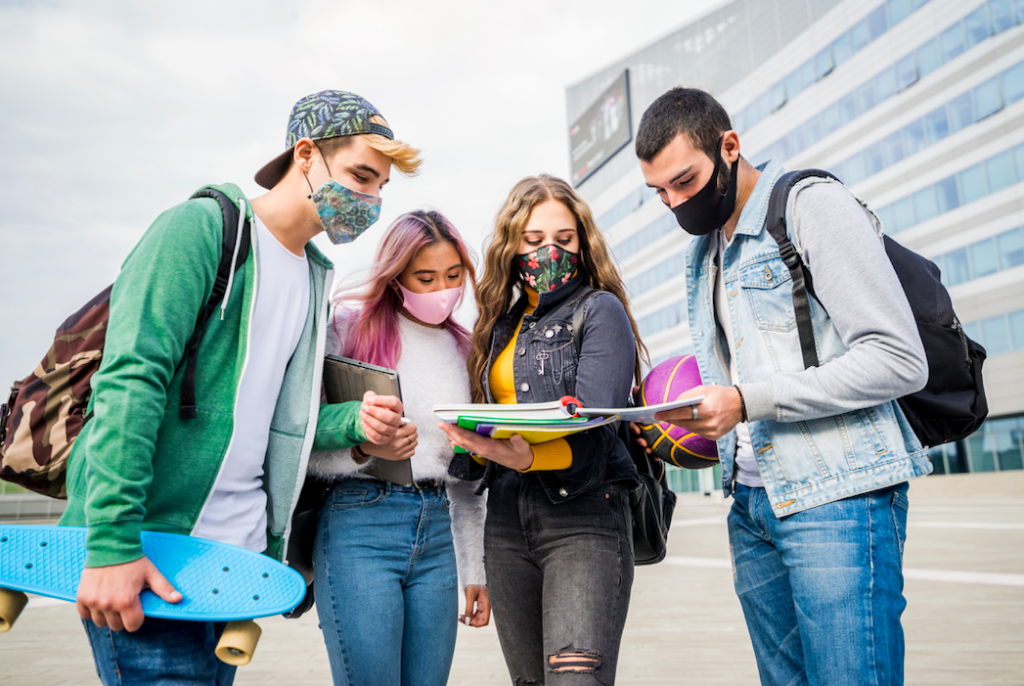
Quaranteens: Three Ideas to Help Students Grow in the Pandemic
By: Tim Elmore
It’s been over a year since students all over the world were sent home from school and instantly had to learn how to learn from home. Teachers tried to maintain academic standards as students transformed their bedrooms, dens, and kitchens into classrooms to try to meet those standards.
Some call these middle school and high school students quaranteens.
They’re now voicing what it’s been like to spend 12 months in a lockdown, knowing rites of passages for past high schoolers will not happen for them. The senior trip, the prom, the graduation ceremony–all of these are morphing (at least slightly) and teens are feeling the angst of it all. In an interview, some said to me:
“My anxiety has gone up a thousand percent.”
“I pretty much feel lonely all the time.”
“I love spending time on screens, but I hate them now because that’s all I do.”
Dr. Dimitri Christakis, director of the Center for Child Health, Behavior and Development at Seattle Children’s Research Institute said, “The cost will be borne by families because increased online use is associated with anxiety, depression, obesity and aggression — and ‘addiction to the medium itself.’” Did you know that screen time has doubled year over year during the pandemic?

What the Teenage Brain Needs
I do not claim to be a neuroscientist, but as I study brain development in teens, it is clear that adolescence is a time of measurable change in hormones and other chemicals that change how a person reacts to life. Their brains are pruning themselves, moving from childhood thoughts and feelings to adult thoughts and feelings. It’s an in-between stage where a parent, teacher, or coach observes shifting emotions on any given day.
My point is simple: The essentials COVID-19 has stolen from teens are the very elements they need to develop and thrive. Three realities are clear:
- Their brains need socialization.
- Their brains need structure.
- Their brains need sleep.
Teens Need Socialization
One of the primary ways teens mature is through social contact. They are testing boundaries. They’re assessing patterns of thought. They are comparing themselves to others and forming a sense of identity. This happens when they spend time with both adults and peers. The pandemic has forced them to separate, so adults need to help them find ways to get connected and socialize as part of their development. Students see it as fun, but we know it’s actually how they’ll grow during their adolescent years.
Consider how kids develop their values during their childhoods.
- Ages 1-7: Imprint by observation. (They observe adults and emulate what they see.)
- Ages 8-13: Modeling by heroes. (They now choose their heroes and imitate them.)
- Ages 14-20: Socialization by peers. (They compare and contrast via relationships.)
What if we got just as intentional about encouraging teens to find places they can connect with each other for non-academic purposes as we are about academics? Driveway small groups, community service projects, or even the Clubhouse app are great starting points for students to socialize and grow together.
Teens Need Structure
The pandemic hasn’t removed structure completely, but it has reduced it significantly. For months, the typical routines of classes, athletic practices, band rehearsals, and school plays have dropped and in some places disappeared for months. Most teens need this structure in their daily schedules. It prepares them for adulthood and enables them to build disciplines and habits in their lives. Consider the benefits of structure:
- It fosters a sense of security as norms are established.
- It provides clarity and combats ambiguity.
- It can build good habits through a maintained routine schedule.
Stick to a schedule that works. Set a time to wake up, exercise, shower, get dressed, have breakfast, or whatever your student needs to start the school day. If it helps, allow your teen to sleep in a little later than normal. Just like in most classes, phones should be off while doing schoolwork. Keep the TV off during school hours, too, and limit the time they watch the news. Plan mini breaks and a one-hour lunch break.
Teens Need Sleep
Most of us recognize how important sleep is to an adolescent, even more so than an adult. The average amount of sleep that U.S. teenagers get is about seven hours, perhaps a few minutes more depending on where they live. However, studies show they need between nine and nine and a half hours. Teenagers do not get enough sleep for a number of reasons including a shift in their sleep schedules and the number of hours they spend on a screen, especially right before bedtime.
In my interview with high school students, the majority of them acknowledged their sleep patterns have been “wrecked” by the pandemic. Some are on their portable devices even more these days and unless they are intentional about their time, phone addictions can develop. Below are some ideas to foster good sleep habits in students:
- Ban portable devices in the bedroom, and charge them somewhere else.
- Limit caffeine intake. Instead, drink more water.
- Encourage exercise every day–walks, shooting hoops, running, etc.
- Start a habit of reading 30 minutes before falling asleep.
Socialization. Structure. Sleep. They’re basic needs that teens have, especially in a pandemic. It’s up to you and your teens to figure out what’s missing and apply it.
One of our applicable Habitudes is called “Surgeries and X-Rays.” Before a doctor performs an operation to repair a patient’s bone, that surgeon will always take an X-ray to see the fracture and determine what repair is necessary. It would be ridiculous to simply cut into the patient and begin wandering around with a knife, looking for a possible problem in the dark. So it is with students. I suggest you take time to reflect together on what they’re missing. Assess where they stand. Do a conversational “x-ray.” Then they can do the necessary surgery by removing unhealthy habits and inserting healthy ones in their place.
If you’d like to check out Habitudes for Social and Emotional Learning, CLICK HERE.






